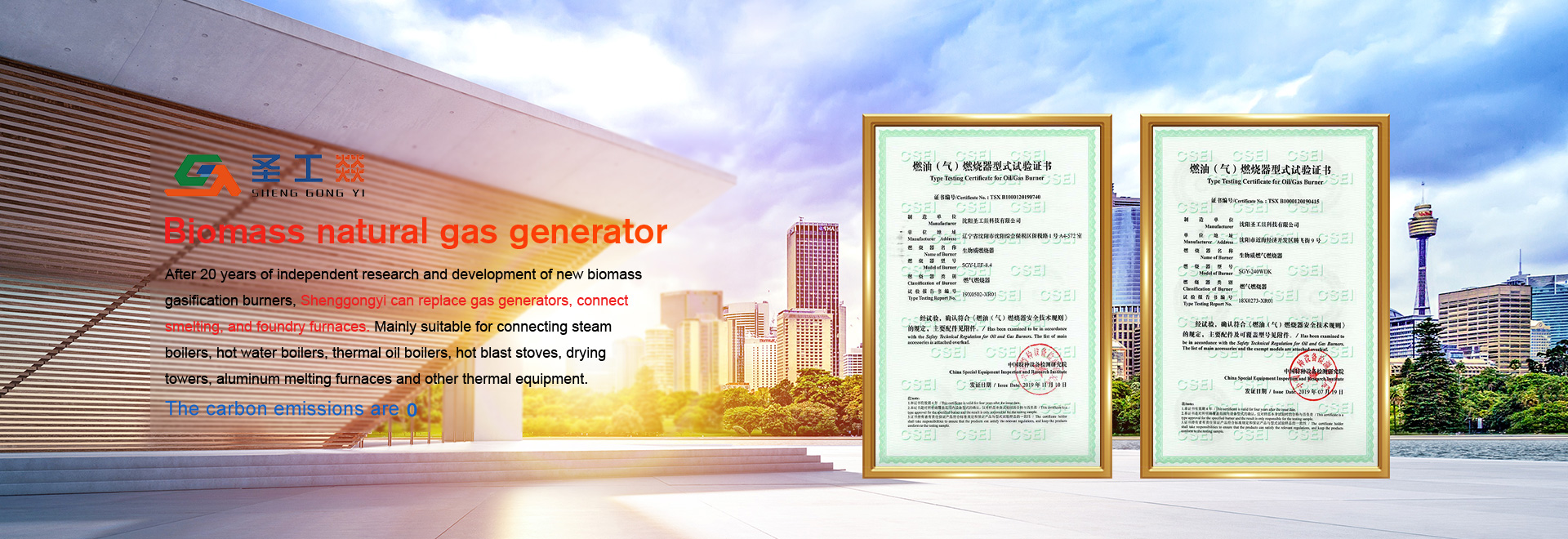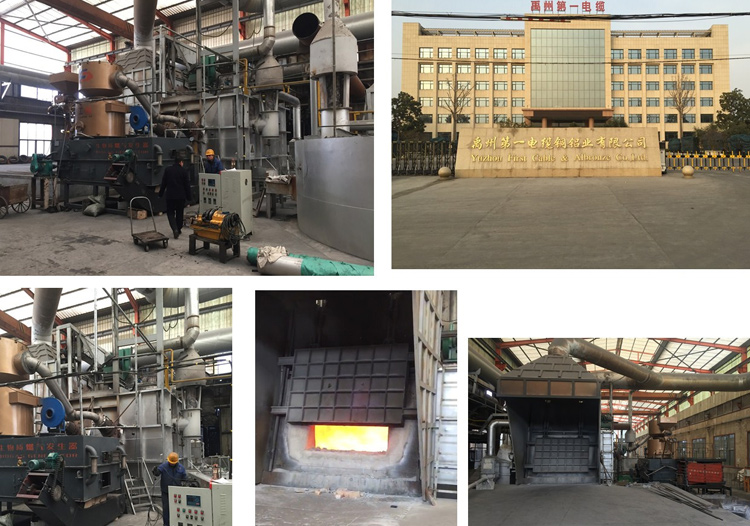Aiming at the technological characteristics of industrial kilns in the non-ferrous metal processing industry, and on the basis of absorbing and retaining the advantages of traditional regenerative combustion technology, we have introduced a new type of fuel non-reversing regenerative combustion technology. It solves the biggest shortcoming of the original regenerative combustion system, that is, due to the intermittent combustion of the reversing regenerative fuel, the furnace pressure in the furnace continues to increase. In order to release the furnace pressure to ensure the safety of the furnace, an auxiliary flue is required in the system. The setting of the auxiliary flue causes a large amount of heat loss while releasing the furnace pressure. The fuel non-reversible regenerative combustion method is continuous flame combustion, so this combustion method is suitable for the combustion of high-temperature biomass fuels.
Biomass gas fuel is also called biomass natural gas, bio-natural gas (high-temperature biogas)
Bio-natural gas is the forced cracking of biomass under high-temperature and low-oxygen conditions, and the gas production is stable. It can be put into production when needed, and the gas production will stop when the material is stopped. Bio-natural gas is a flexible, efficient, stable and safe clean energy; low-temperature biogas is Biomass is a mixed combustible gas produced by the fermentation of microorganisms under anaerobic conditions at room temperature. The biogas production process is slow and needs to be stored, so it cannot meet the continuous production needs of enterprises and is extremely dangerous.
Biomass natural gas uses agricultural and forestry bamboo and wood waste, urban domestic sludge, kitchen waste, edible fungus residue, cattle, sheep and livestock manure and all combustible materials as raw materials to convert into combustible gas energy. In order to meet environmental protection requirements, we all use biomass pellets.
Bio-natural gas is developed using the characteristics of biomass that is composed of hydrocarbons and is volatile. Biomass solid fuel can be decomposed into small molecule gases by heating to above 600 degrees, the main components are H2, CH4, CnHm, CO and other combustible gases.
Work flow: The biomass particles are fed into the gasification device by the automatic feeding system to produce mixed high-temperature gas, then pass through the material and gas separation chamber for primary filtration, and output through the pipeline; the combustible gas is mixed with air through a dedicated burner and burns to heat the load (Steam boiler, heat carrier boiler, smelting furnace, etc.).
Bio-natural gas contains hydrogen, oxygen, nitrogen, methane, carbon monoxide, ethylene, ethane, propane, propylene and other mixed combustible gases.
Raw materials are widely sourced, recyclable, and waste utilization; the main component of bio-natural gas is hydrocarbons, which is very clean after combustion; plant growth absorbs carbon dioxide and burns to emit carbon dioxide. A cyclical process produces zero carbon emissions, achieving carbon neutrality advocated by the country. .
Take the aluminum processing industry as an example. The average thermal efficiency of my country's melting furnaces is less than 30%, fuel waste is serious, burning smoke is directly discharged, and even some aluminum processing companies directly burn coal, which causes serious environmental pollution and fuel waste. Biomass natural gas is a clean and efficient gas fuel. It is an ideal upgrade product for high-pollution, high-energy, and high-price fuel combustion companies. It is also an ideal substitute for oil and gas boilers and kiln fuels.
4. Biomass natural gas regenerative combustion technology:
Biomass natural gas regenerative combustion technology is an effective combination of fuel non-reversing regenerative combustion technology and biomass natural gas direct combustion technology. Since biomass natural gas has a temperature of 400-500°C, it is not suitable for traditional regenerative combustion. It uses the characteristics of high efficiency, cleanliness and low price of biomass natural gas, as well as fuel non-reversing regenerative combustion, high efficiency heat recovery and low NOX Organically combined with the characteristics of multi-level combustion, it provides users with the highest quality and efficient environmental protection and energy saving technology. Related indicators after passing the bag filter: combustion efficiency ≥ 95%, system thermal efficiency ≥ 85%, soot emission ≤ 10 mg/m3, SO2 emission ≤ 50 mg/m3; NOx emission ≤ 50 mg/m3. The thermal efficiency of the aluminum melting furnace is ≥50%.
![img]()
![img]()
4. Huge energy-saving and money-saving space:
Based on the current average consumption data of 65m³/t aluminum of our modified natural gas aluminum melting furnace: 65m³/t aluminum×8400kcal/m³ (natural gas calorific value)=546000kcal/t aluminum ÷4200kcal/kg (biomass that can be produced by 1 kg of biological particles The calorific value of natural gas is the same below) = 130kg/t. According to the above calculation, when the fuel is not switched to regenerative combustion, the aluminum consumption per ton is 130kg/t aluminum. We set the biomass natural gas melting aluminum index at 130kg pellets/t aluminum. The current price of biomass pellets in the market is 0.7-1 yuan/kg, which means that the fuel price per ton of aluminum is 130 yuan, and the price of using natural gas is 65×3.5=227.5 yuan/t. Melting one ton of aluminum can save 100 yuan/t. For example, each production line in the aluminum strip industry can save at least 1 million yuan in fuel costs per year (excluding the holding furnace). The aluminum profile industry can save at least 2 million yuan each year.
At the same time, the use of biomass natural gas regenerative aluminum melting can achieve carbon neutrality, so that the company's carbon emissions are zero, and there is no need to pay carbon emissions taxes, which can save companies a lot of costs.
5. Huge social benefits:
According to the national "14th Five-Year Plan" development plan, my country will achieve a carbon peak in 2030 and achieve carbon neutrality in 2060. This is the responsibility and obligation of our carbon emission companies and energy-saving and environmental protection companies. We should take our due responsibilities and obligations as a matter of course. Carbon neutrality is in the modern age and benefits the future. It is each of us to contribute to the development and construction of the country. The responsibilities of citizens.
Achievements of direct combustion of biomass and natural gas to melt aluminum:




